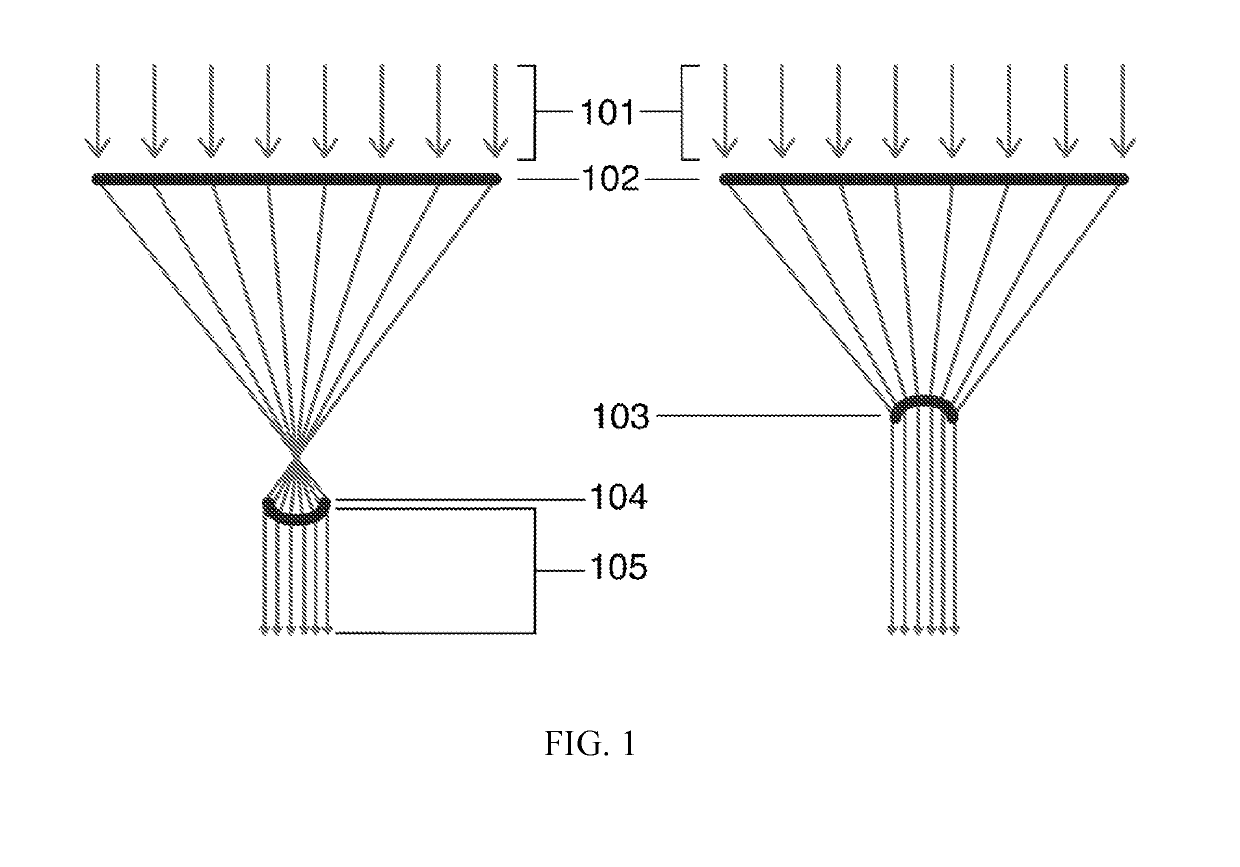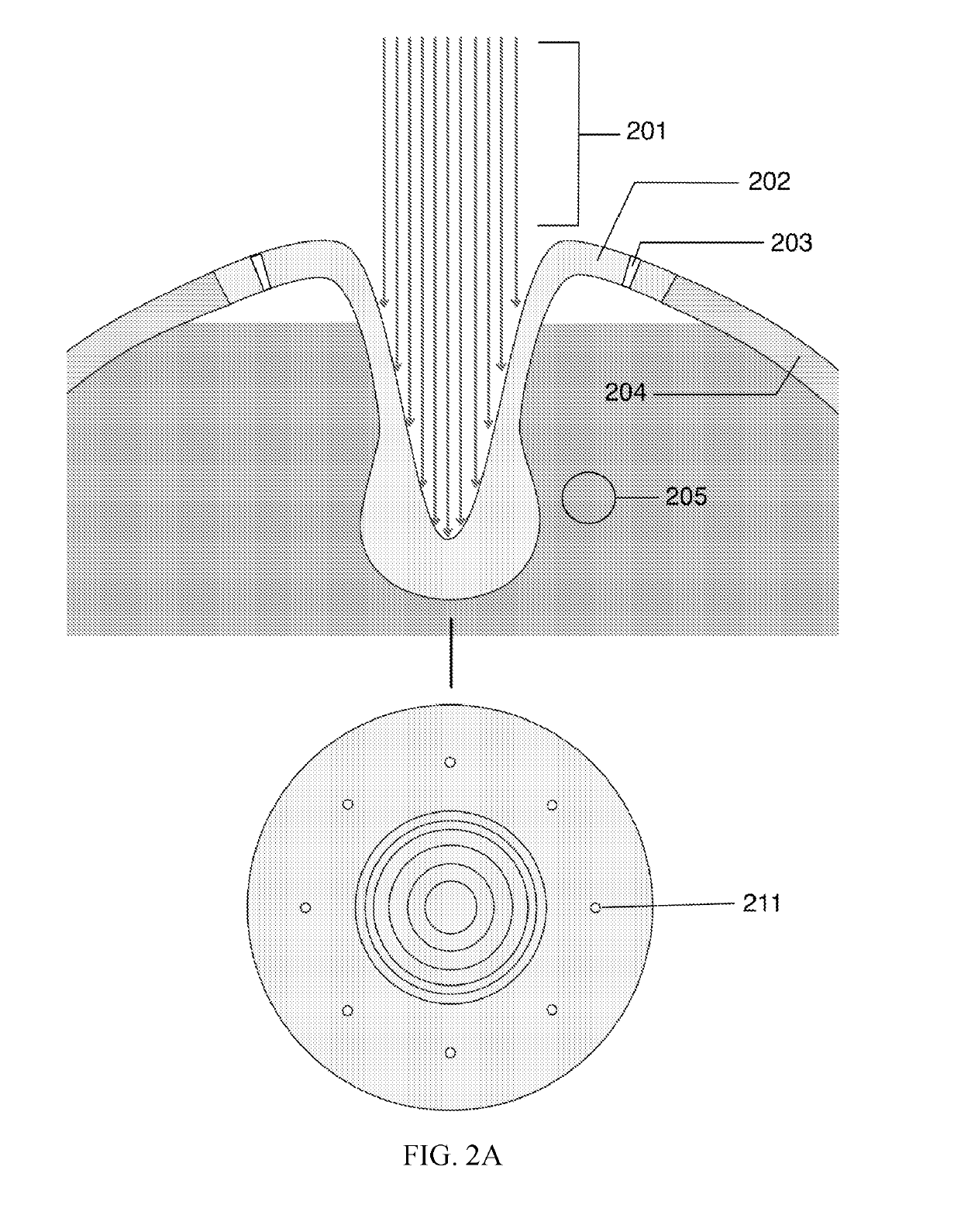Solar power collection systems and methods thereof
a solar power collection and solar panel technology, applied in solar heat collector details, lighting and heating apparatus, greenhouse gas reduction, etc., can solve the problems of molten salt heat transfer fluid projects using molten salts, unable to produce higher heating temperatures, radiative, convective, etc., and other problems
- Summary
- Abstract
- Description
- Claims
- Application Information
AI Technical Summary
Benefits of technology
Problems solved by technology
Method used
Image
Examples
Embodiment Construction
[0023]In one aspect, the present invention provides a solar power collecting system, comprising: a means of forming a collimated or otherwise concentrated beam of solar radiation; a heating element; and a thermal storage medium, wherein said heating element can withstand heating from the collimated or otherwise concentrated beam of solar radiation without breaking; and wherein said beam directly heats said heating element through contact with a conical depression or concave surface on the element; and wherein said heating element transfers solar energy in the form of thermal energy to the thermal storage medium by conduction.
[0024]In one embodiment of this aspect, the means of forming a collimated or otherwise concentrated beam of solar radiation comprises a Fresnel lens in conjunction with a converging or diverging lens.
[0025]In another embodiment of this aspect, the means of forming a collimated beam of solar radiation comprises a Fresnel lens whose focal point is positioned at th...
PUM
 Login to View More
Login to View More Abstract
Description
Claims
Application Information
 Login to View More
Login to View More - R&D
- Intellectual Property
- Life Sciences
- Materials
- Tech Scout
- Unparalleled Data Quality
- Higher Quality Content
- 60% Fewer Hallucinations
Browse by: Latest US Patents, China's latest patents, Technical Efficacy Thesaurus, Application Domain, Technology Topic, Popular Technical Reports.
© 2025 PatSnap. All rights reserved.Legal|Privacy policy|Modern Slavery Act Transparency Statement|Sitemap|About US| Contact US: help@patsnap.com



